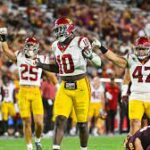The Early Years: Laying the Foundations
Dianne Feinstein’s journey began in San Francisco, where she was born and raised. Growing up in the city that she would one day lead, her early years were a prelude to an illustrious career. Completing her education at Stanford University in 1955, Feinstein quickly delved into politics, showing promise and dedication from the get-go.
San Francisco’s Beacon: From Board Member to Mayor
In 1969, Feinstein’s political aspirations took off when she was elected to the San Francisco Board of Supervisors. Breaking barriers, she became the board’s first female president in 1978. However, that year also witnessed the tragic assassinations of Mayor George Moscone and City Supervisor Harvey Milk. Stepping up amidst the chaos, Feinstein took the reins as mayor, becoming the first woman to do so.
Her tenure as mayor wasn’t just symbolic. Under her leadership, the iconic San Francisco cable car system underwent a major renovation. She also played a pivotal role in hosting the 1984 Democratic National Convention. And while her leadership faced challenges, like the 1983 recall attempt, Feinstein emerged victorious. By 1987, her effectiveness was nationally recognized, with City & State naming her the country’s most proficient mayor.
Rising in the Ranks: From State to Senate
While the 1990s began with a hiccup as Feinstein lost her gubernatorial bid, it didn’t deter her spirit. Two years later, in a special election, she found herself heading to Washington, becoming California’s first female U.S. senator. Her achievements didn’t stop there. In the 2012 elections, she garnered a staggering 7.86 million votes, setting a record for the most popular votes ever received by a U.S. Senate candidate.
Legislation and Leadership: Setting Standards
Feinstein’s time in the Senate saw her champion significant causes. One of her most notable contributions was the 1994 Federal Assault Weapons Ban. Furthermore, she was no stranger to leadership roles. She became the first woman to chair crucial committees, such as the Senate Rules Committee and the Senate Intelligence Committee. Additionally, she was at the forefront during a U.S. presidential inauguration – another first for a woman.
Throughout her tenure, Feinstein showcased her expertise and dedication to service, leading critical committees like the Senate Intelligence Committee (2009-2015) and holding prominent positions in the Senate Judiciary Committee (2017-2021).
Legacy Remembering a Trailblazer
Dianne Feinstein’s journey from the streets of San Francisco to the corridors of the U.S. Senate was nothing short of inspirational. Her dedication, leadership, and trailblazing spirit have left an indelible mark on U.S. politics. As we remember her life and legacy, we’re reminded of the power of resilience, dedication, and the ability to break barriers at every turn.
In the annals of American political history, Dianne Feinstein stands tall, not just as a politician but as a symbol of what one can achieve with determination and a passion for service.



